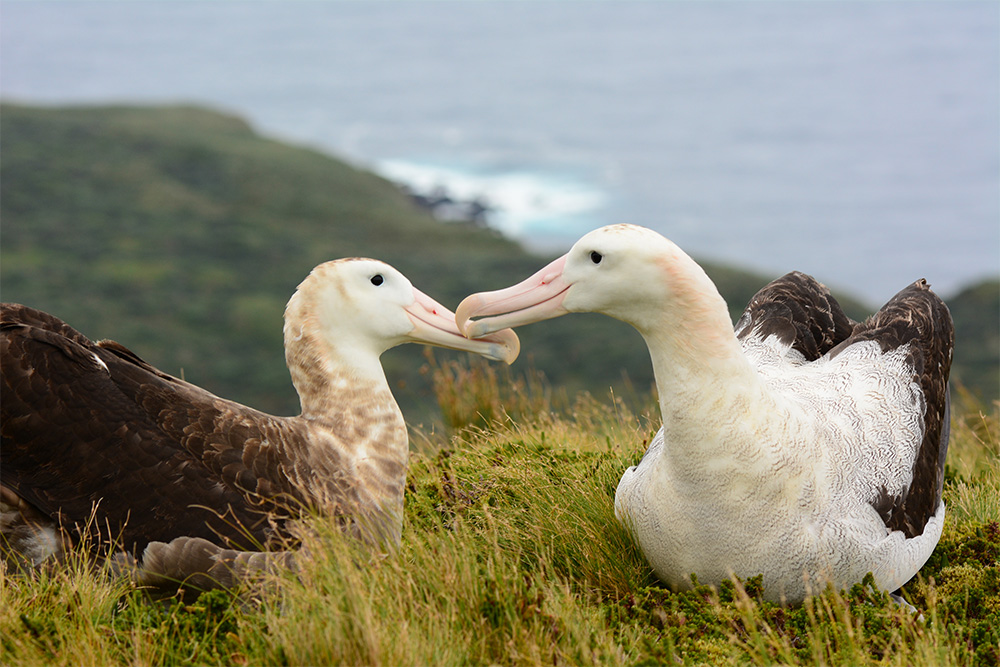March 11, 2025
Press Release: New eDNA Tool Can Detect Invasive Rodents Within an Hour
New environmental DNA technology can help protect vulnerable island ecosystems from destructive invasive species.
We use cookies to help you navigate efficiently and perform certain functions. You will find detailed information about all cookies under each consent category below.
The cookies that are categorized as "Necessary" are stored on your browser as they are essential for enabling the basic functionalities of the site. ...
Necessary cookies are required to enable the basic features of this site, such as providing secure log-in or adjusting your consent preferences. These cookies do not store any personally identifiable data.
Functional cookies help perform certain functionalities like sharing the content of the website on social media platforms, collecting feedback, and other third-party features.
Analytical cookies are used to understand how visitors interact with the website. These cookies help provide information on metrics such as the number of visitors, bounce rate, traffic source, etc.
Performance cookies are used to understand and analyze the key performance indexes of the website which helps in delivering a better user experience for the visitors.
Advertisement cookies are used to provide visitors with customized advertisements based on the pages you visited previously and to analyze the effectiveness of the ad campaigns.
Looking to make an impact this Earth Month? Here’s how.

Warning: Graphic video. Viewer Discretion is Advised.
Last year a study, published by the Royal Society for the Protection of Birds, found that invasive mice are responsible for two million fewer seabird chicks on Gough Island in the South Atlantic every year. This alone, was reason for concern for the future of endangered albatross and petrels, but new video footage has identified a greater concern—predation on adult albatross.

Mice and rats are among the most pervasive invasive species on islands around the world, but in recent years the threat of invasive mice has become even more apparent. In 2015, scientists on Midway Atoll in the Northwester Hawaiian Islands discovered invasive mice were attacking adult albatross. The epidemic of these attacks quickly spread across the island, threatening the world’s largest laysan Albatross population.
On Gough and Marion Islands, video footage has previously captured invasive mice attacking albatross chicks, but new footage shows a nesting adult on Gough being attacked throughout the night. Gough Island is home to 99% of the world’s Critically Endangered Tristan Albatross and Atlantic Petrel populations, putting their global populations at an even greater risk than previously understood.
Video cameras placed alongside nests have revealed what happens. The mice, in groups of up to nine, attack the birds and in the case of chicks can eat them alive. The ongoing threat to chicks poses a severe risk to the global population, but since albatross mate for life, producing just one egg every other year, the loss of adult birds will accelerate this tragedy.
We have known for more than a decade that the mice on Gough Island attack and kill seabird chicks. While this is already of great concern, attacks on adults, which can produce dozens of chicks in their lifetime, could be devastating for the populations’ chances of survival. survival of these long-lived seabirds. It’s a terrible development, and these gentle giants could now be lost even more rapidly than we first predicted.”
Chris Jones, Senior Gough Field Assistant
Mice were accidentally introduced by sailors to the remote Gough Island during the 19th century. Now, mice have learned to exploit the island’s once abundant birds, eating alive the eggs and chicks of as many as 19 different species. In 2020, the Royal Society for the protection of birds and their partners plan to remove invasive mice, effectively securing the island for its native wildlife.
Featured photo: A pair of Atlantic Yellow-nosed Albatross on Gough Island. Credit: Ben Dilley
Check out other journal entries we think you might be interested in.
Notifications